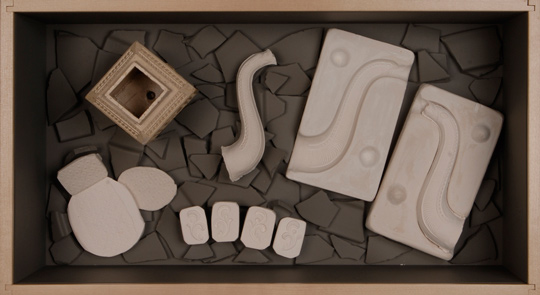After 1700 potters in England learned how to refi ne stoneware clay by passing it through screens or sieves to remove large particles of sand and grit. This processing made the clay much whiter and also allowed it to be shaped, molded, or cast into intricate patterns and complex forms.
Patternmakers within the pottery factory would fi rst carve a block mold or master mold like the original eighteenth-century example seen here. Using this positive block they would make a negative mold – called a “working mold” – out of plaster. The reproduction parts seen here reveal some of the complicated shaping processes used to create high-quality white stonewares. Many plaster working molds were carved to create even more ornate spouts or handles with extra bumps, lines, or textures. {Reproduction molds madeby Michelle Erickson, 2008}
Block Mold, ca. 1760
Staffordshire, England
Salt-glazed stoneware
Chipstone Foundation 1995.10

